Recipe for gingerbread cookies
Published by Kathleen Woo,
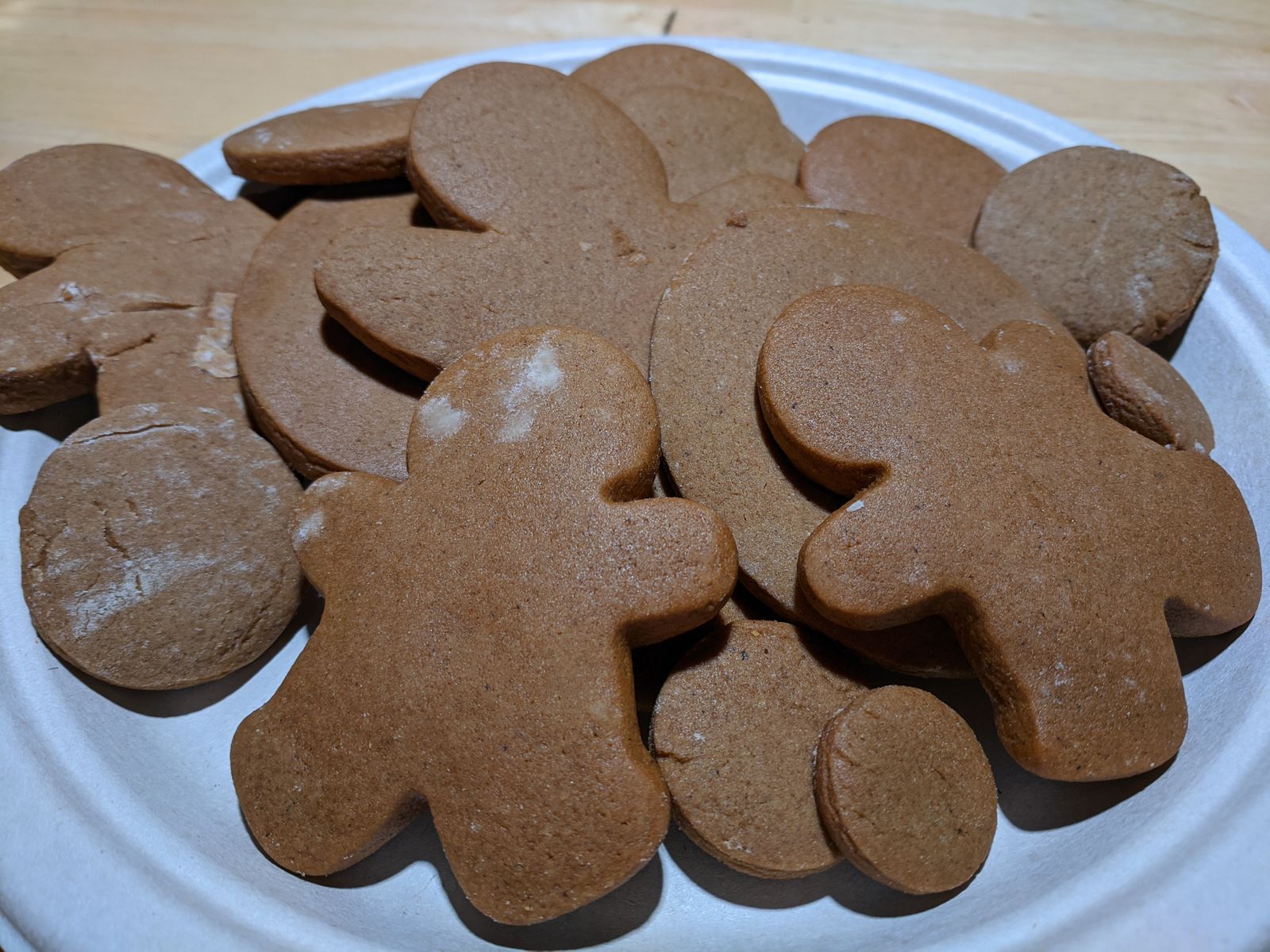
This is the recipe for the absolute most delicious gingerbread cookies I have ever encountered. They have a great texture, and a mild spicy taste. I got this recipe from my grand aunt Mary, and following these instructions does reproduce the wonderful flavor.
I recommend making the cookies a little thicker so they're a bit fluffy to eat and a great texture. But if you want something closer to a ginger "snap", roll the dough thinner and bake them on the longer side.
Tools and Ingredients
Ingredients:
- Flour, all purpose (3 cups)
- Baking soda (1 tsp)
- Cinnamon, ground (¾ tsp)
- Ginger, ground (¾ tsp)
- All spice, ground (½ tsp)
- Cloves, ground (½ tsp)
- Salt (½ tsp)
- Black pepper, freshly ground (¼ tsp)
- Butter, unsalted (8 tbsp / 1 stick)
- Vegetable shortening (¼ cup)
- Sugar, light brown (½ cup, packed)
- Molasses, unsulfured (⅔ cup)
- Egg, large (1)
Tools:
- Bowl, dry mix
- Bowl, wet mix with electric mixer
- Electric mixer, wet mixing
- Spoon, thick wet mixing
- Plastic wrap
- Rolling pin
- Cookie cutters
- Cookie sheets, non-stick, 1x-4x
- Non-stick spray
- Cooling racks
Note: Dough needs to be chilled in refrigerator for 3 - 48 hrs before baking.
Make Gingerbread Cookie Dough
Mix dry ingredients: Sift the flour (3 cups), baking soda (1 tsp), cinnamon (¾ tsp), ginger (¾ tsp), allspice (½ tsp), cloves (½ tsp), salt (½ tsp) and pepper (¼ tsp) through a wire sieve into a medium bowl. Set aside.
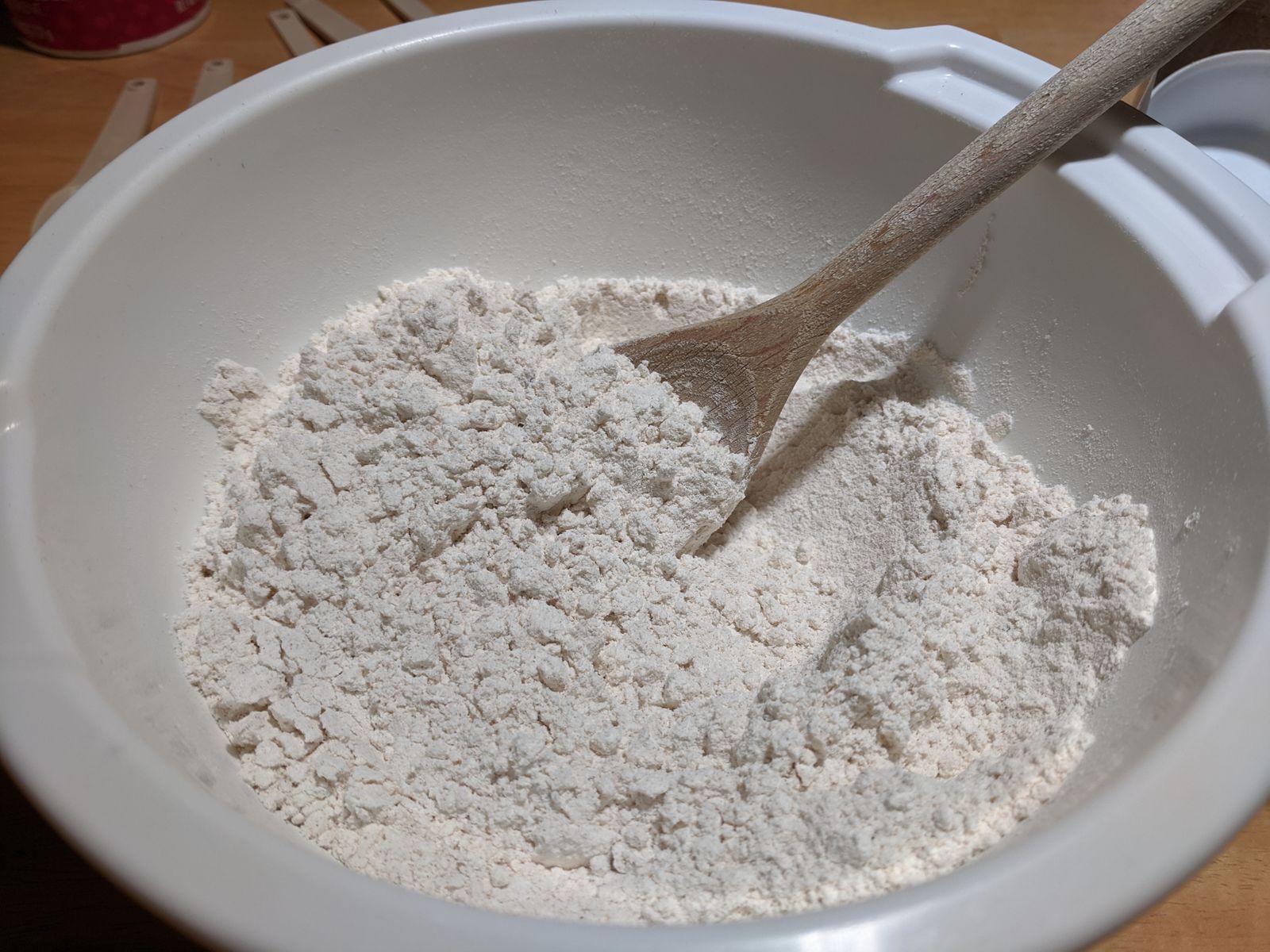
All dry ingredients thoroughly sifted together
Mix wet ingredients: In a large bowl, using a hand-held electric mixer at high speed, beat the butter (8 tbsp) and vegetable shortening (¼ cup) until well-combined, about 1 minute. Add the brown sugar (½ cup, packed) and beat until the mixture is light in texture and color, about 2 minutes. Beat in the molasses (⅔ cup) and egg (1 egg).
And while you're cooking with molasses, learn about the Great Boston Molasses Flood. If that caught your interest, watch the 20 minute documentary.
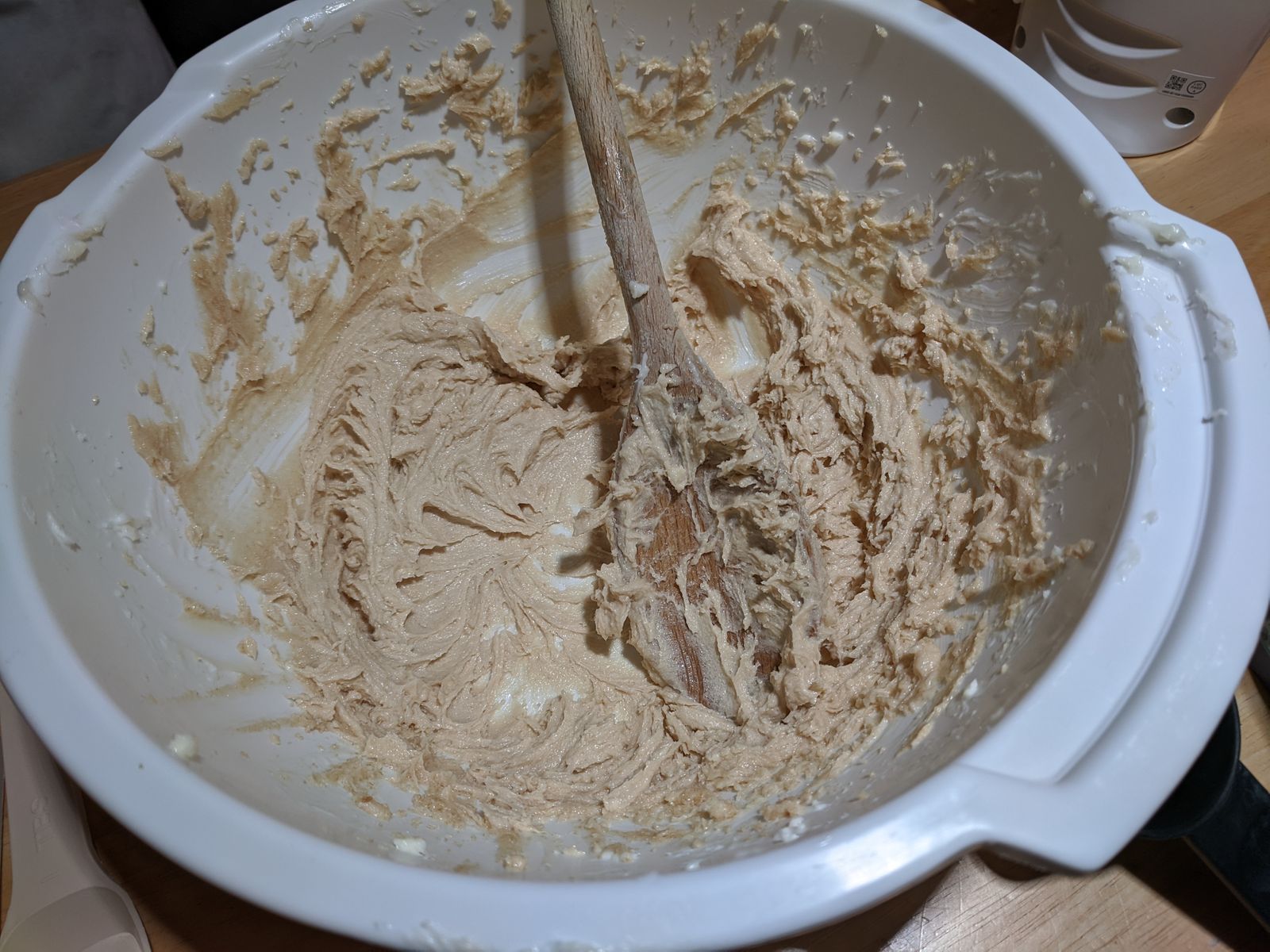
Butter and shortening beaten together
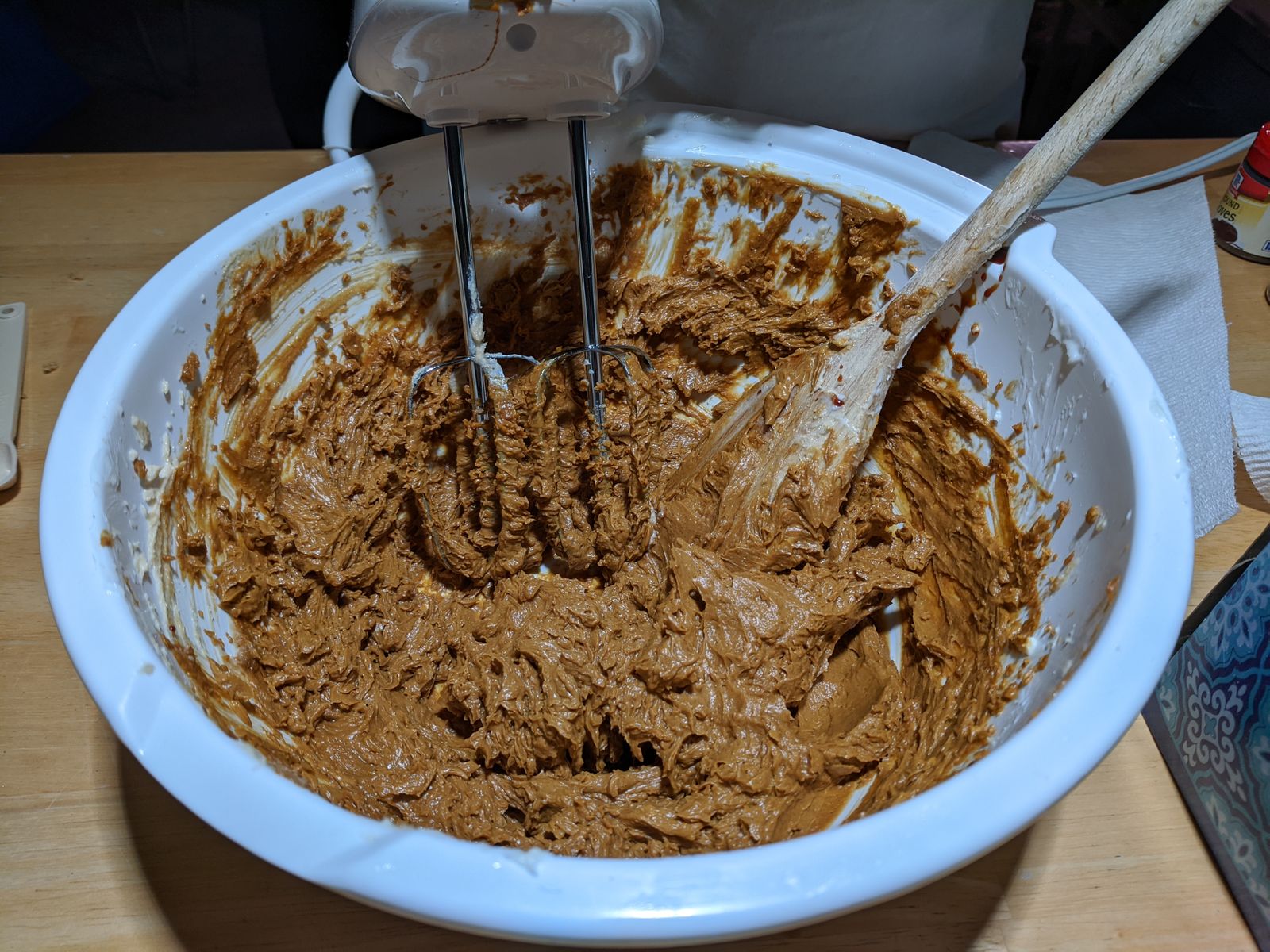
Brown sugar, molasses and egg added to the butter and vegetable oil
Combine dry and wet ingredients: Using a wooden spoon, gradually mix in the flour mixture to make a stiff dough.
Tip: Add a little bit of the dry ingredients at a time and continue to use the electric mixer. Once it becomes too thick, then use the spoon while continuing to add a small amount of the dry ingredients at a time.

Dry and wet ingredients combined to create a stiff dough
Chill dough: Divide the dough into two thick disks and wrap each disk in plastic wrap. Refrigerate until chilled, about 3 hours up to 48 hours.
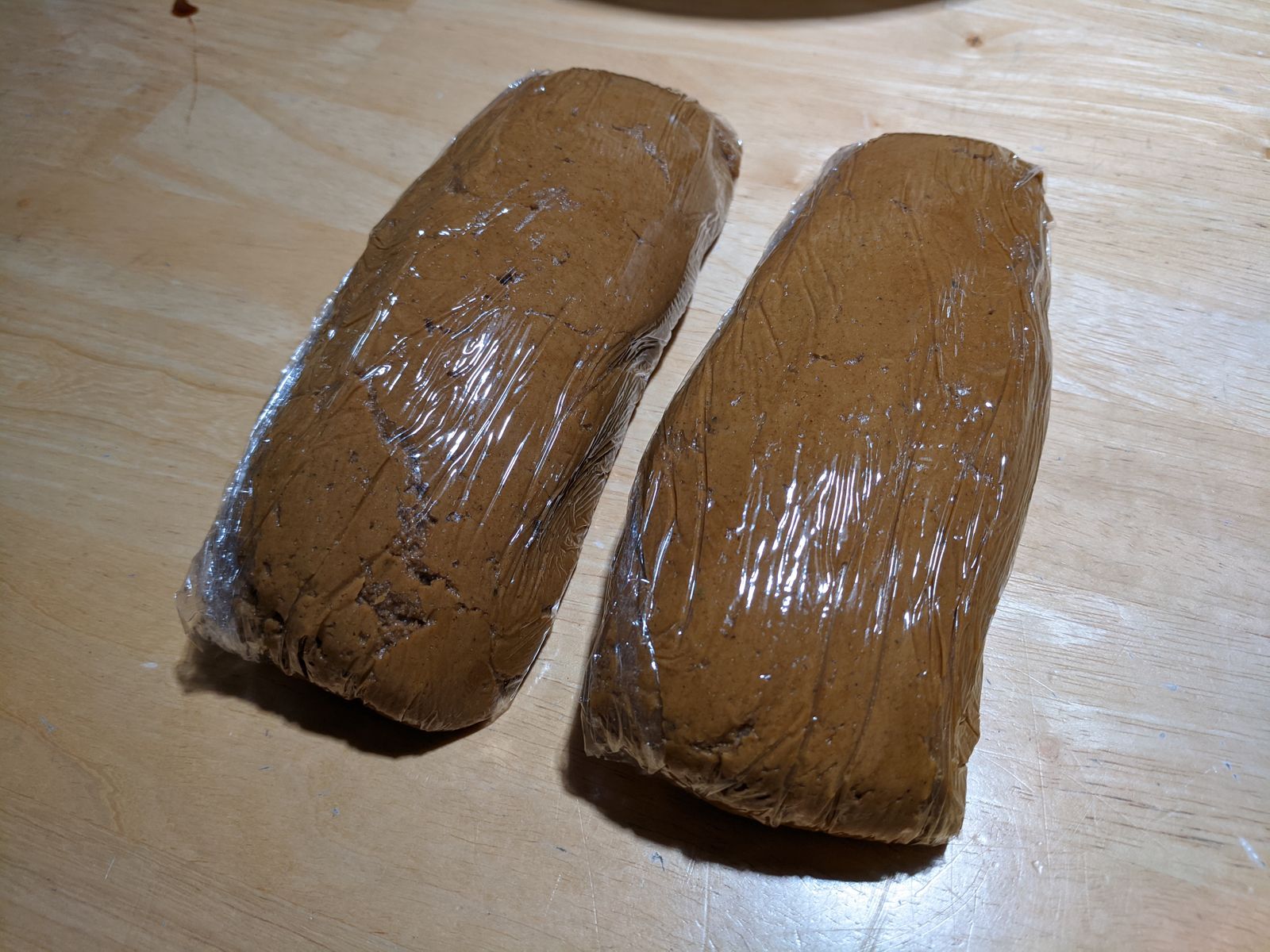
Gingerbread dough separated and wrapped in plastic wrap, ready to be put into the refrigerator
Bake gingerbread cookies
Oven: Preheat to 350°F. Position racks to top and bottom third.
Cut cookies: To roll out the cookies, work with one disk at a time, keeping the other disk refrigerated. Remove the dough from the refrigerator and let stand at room temperature until just warm enough to roll out without cracking, about 10 minutes. If the dough has been chilled for longer than 3 hours, it will need more time.
Place the dough on a lightly floured work surface and sprinkle the top of the dough with flour. Kneed dough over the floured surface repeatedly until it is soft, pliable, and has minimal cracking on the sides. It is OK if the dough continues to absorb more flour from the table.
Roll out the dough 1/8 inch thick (or thicker for softer cookies), being sure that the dough isn't sticking to the work surface (run a long meal spatula or knife under the dough occasionally just to be sure, and dust the surface with more flour, if needed).
Using cookie cutters, cut out the cookies and transfer to nonstick cookie sheets, placing the cookies 1 inch apart. You can use a cooking spray on the sheets, or rub a thin layer of the leftover vegetable oil on them.
Gently knead the scraps together and form into another disk. Wrap and chill for 5 minutes before rolling out again to cut out more cookies. Thinner cookies will require more chilling to keep them from falling apart, while thicker cookies will retain their shape easier and may not need to be chilled at all.
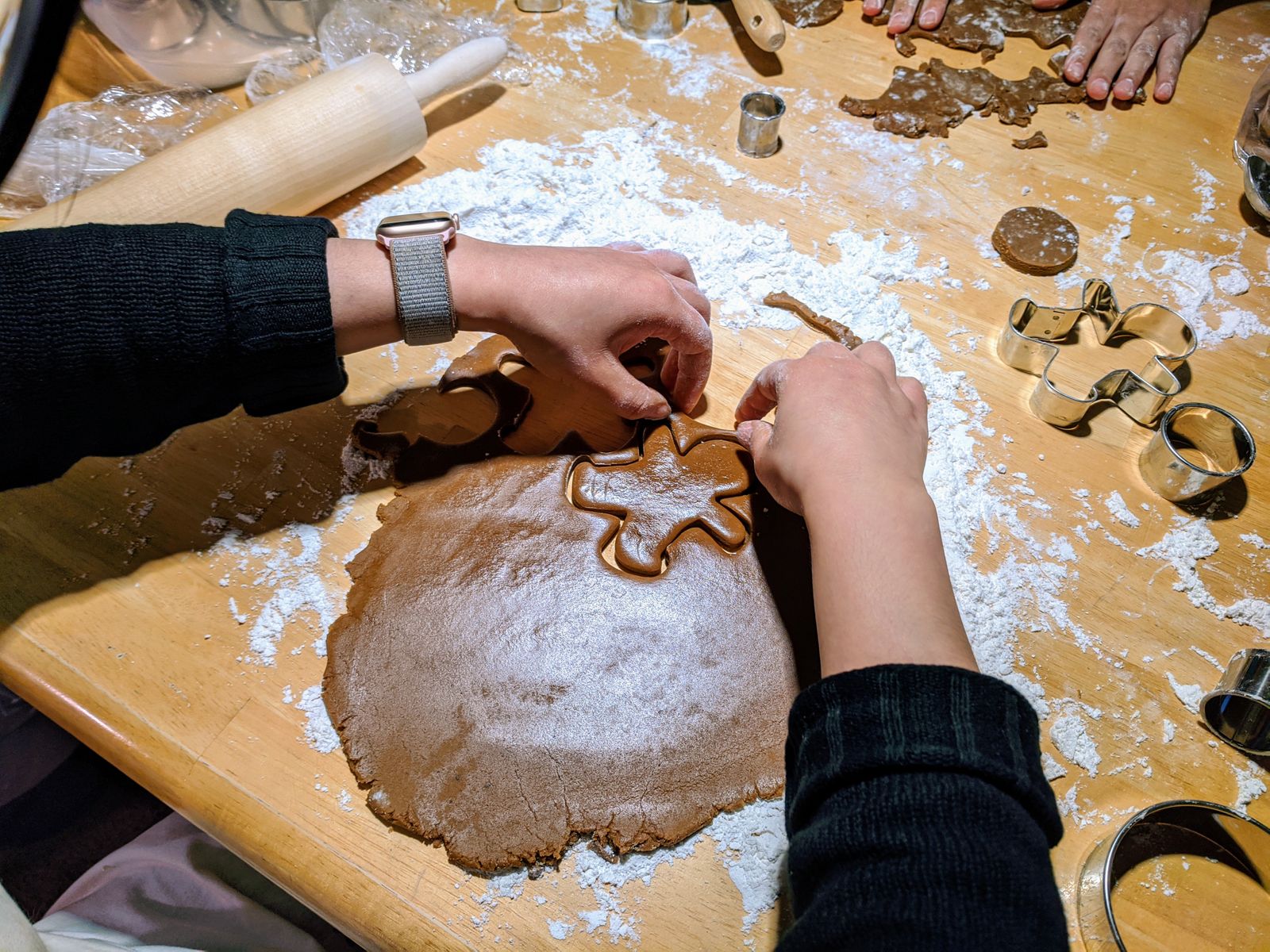
Gently removing a cut gingerbread man from the flattened dough
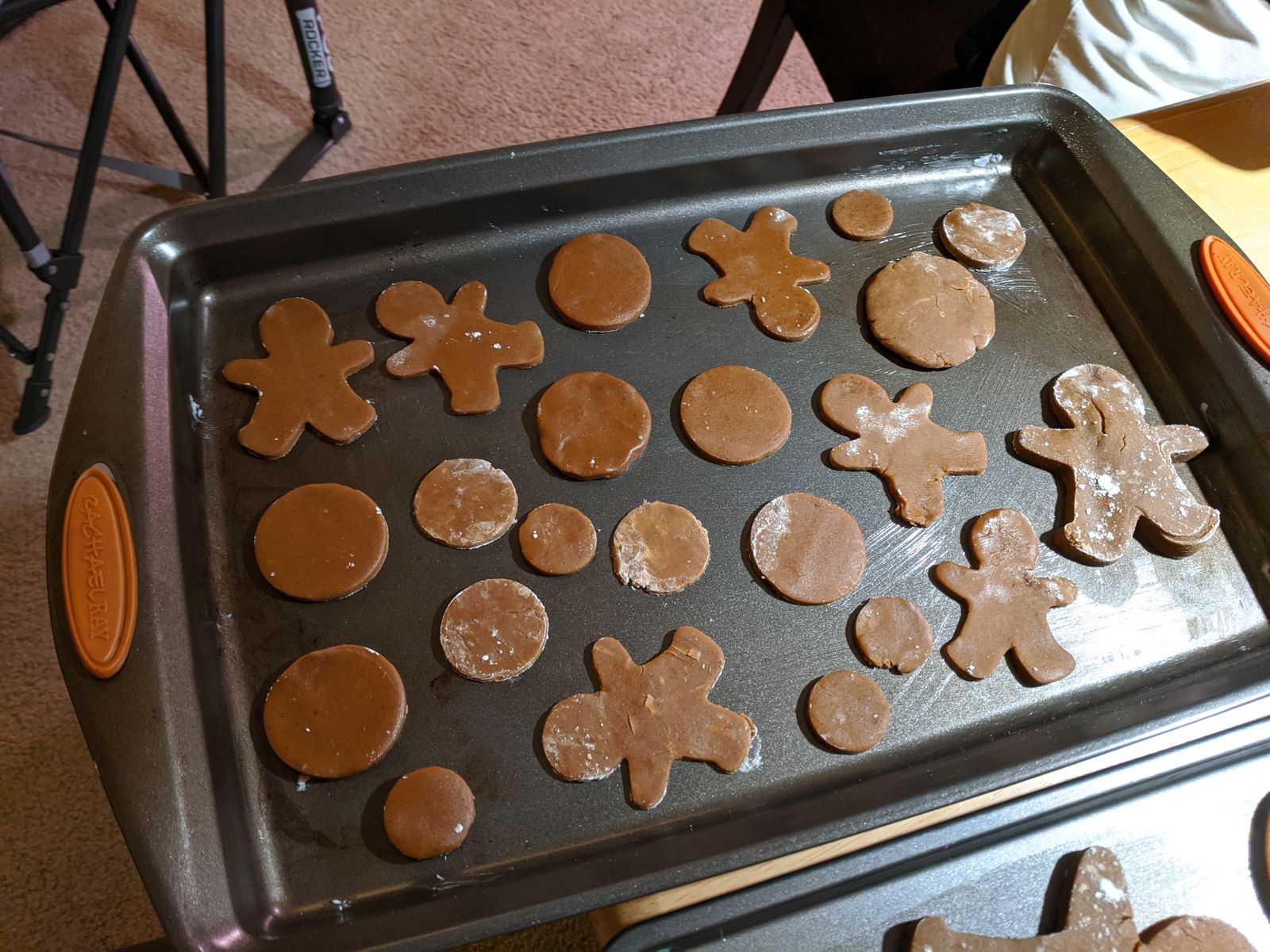
Cut gingerbread cookies ready to be baked
Bake: After 5-6 minutes, move trays: Swap top and bottom trays, and rotate each 180° for the back to now be in the front. Continue to bake until edges become set and crisp, about another 5 to 6 minutes. Remove trays and let them cool for 2 minutes, then transfer to wire racks to cool completely.
Tip: When testing the cookies directly from the oven, remember that they become about twice as firm once cooled.
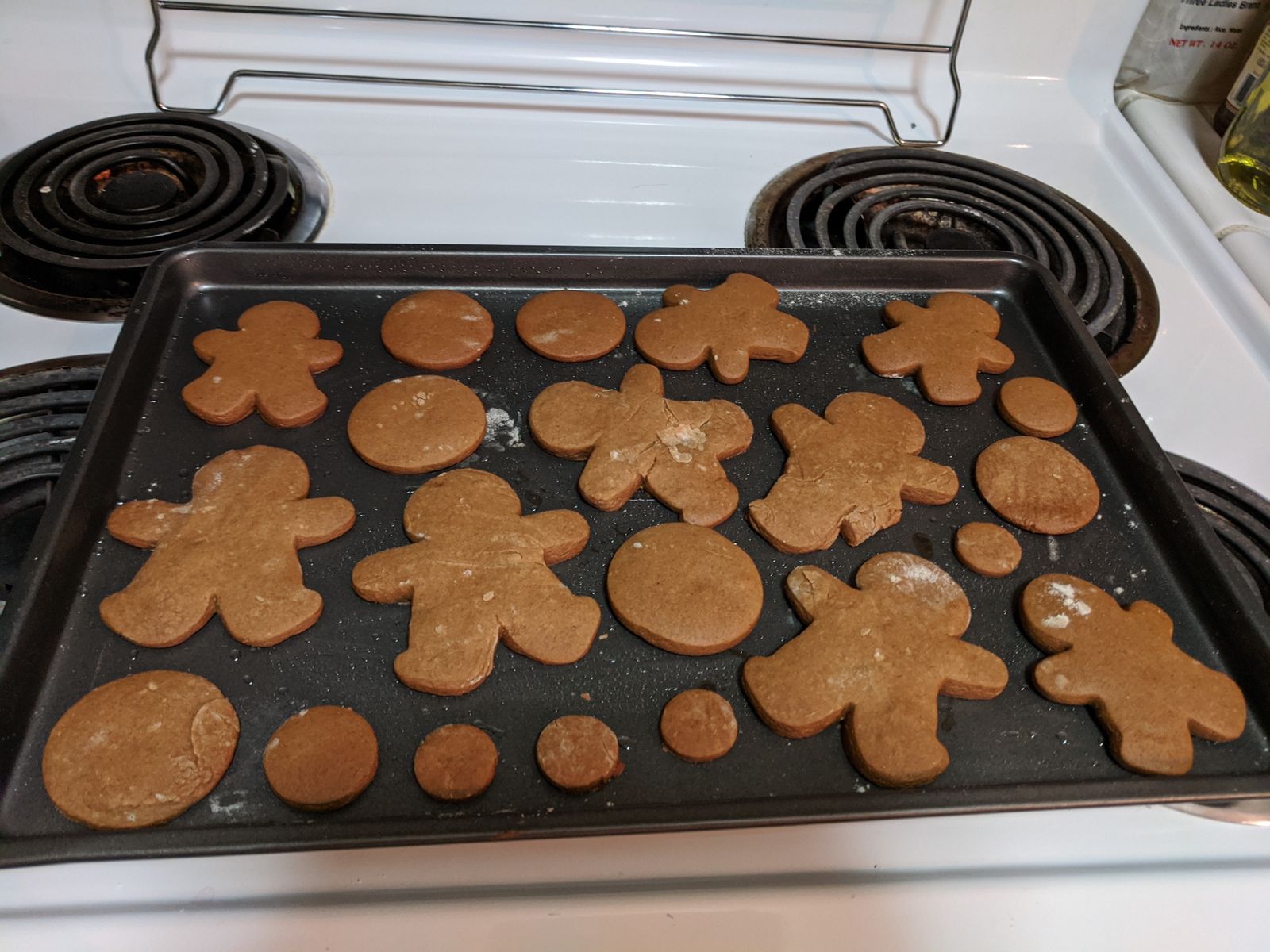
Gingerbread cookies fresh out of the oven. Let rest on tray for 2 minutes before transferring
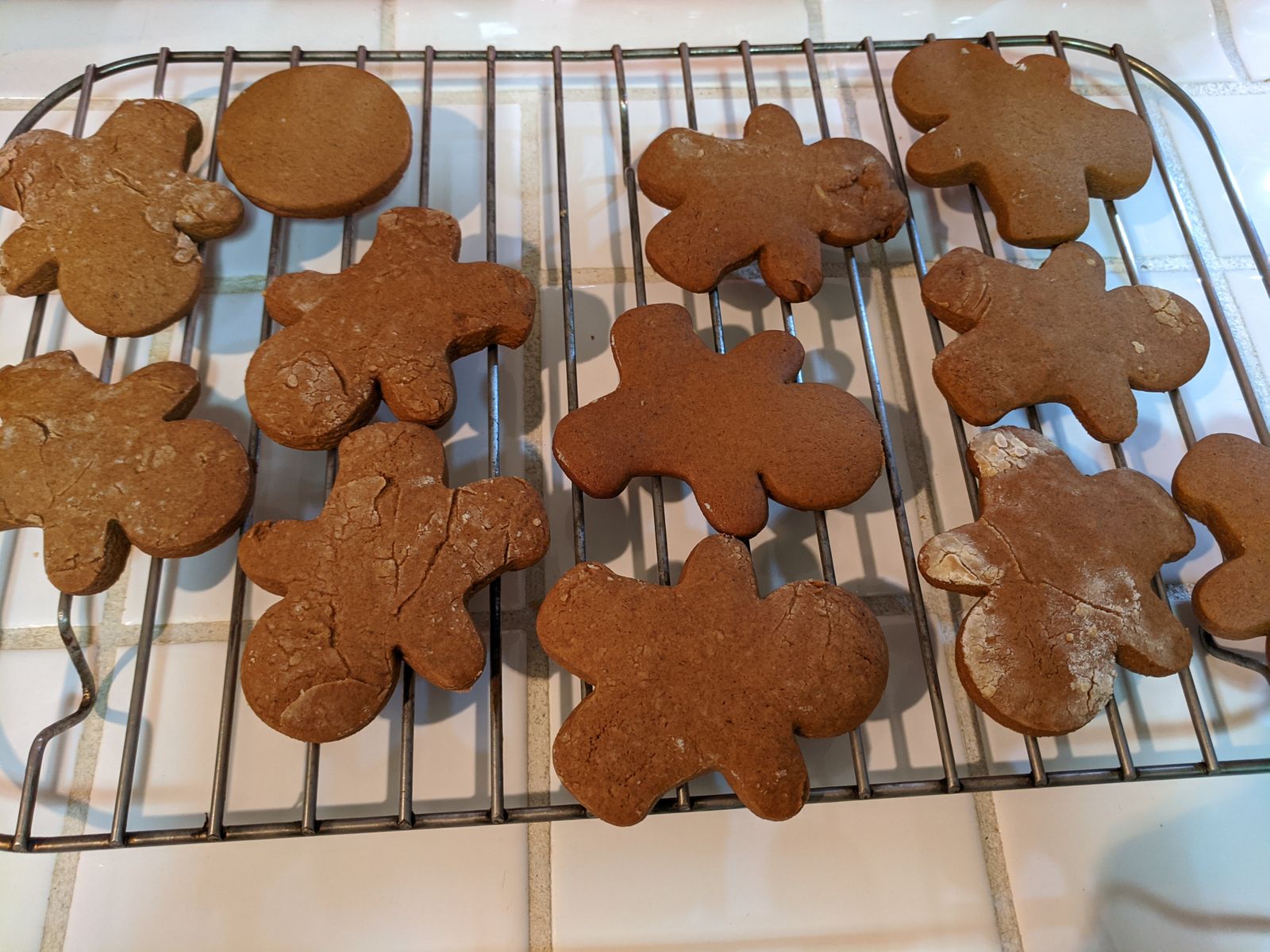
Gingerbread cookies cooling on a rack
Note: In the photo above, there are both cracked and smooth cookies. The cracked cookies are from dough that was not let to warm and kneaded thoroughly enough. The smooth cookies are when the dough was kneaded quite thoroughly and became soft and pliable.
Thicker cookies baked for a total of 10 minutes are soft and almost fluffy, while cooked for 12 minutes will become more crunchy. Thinner cookies will start to be crunchy after 10 minutes of baking, and continue to get more crunchy from there. Bake time and cookie thickness will entirely be up to taste! I prefer thick soft cookies, while my friends prefer thin extra crunchy cookies.
Enjoy!
Cookies last about 1 week when stored in airtight container.
